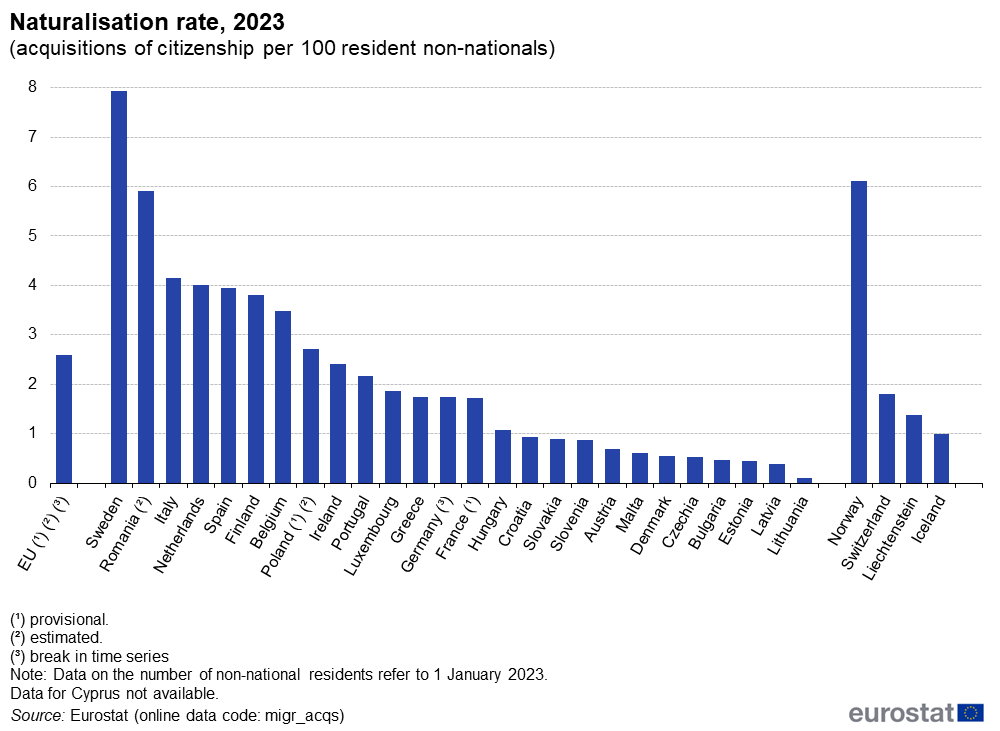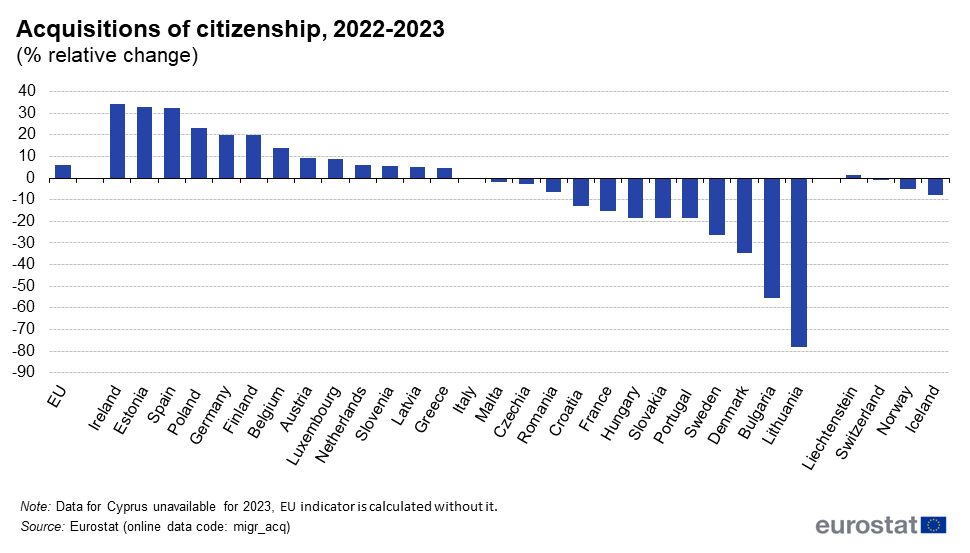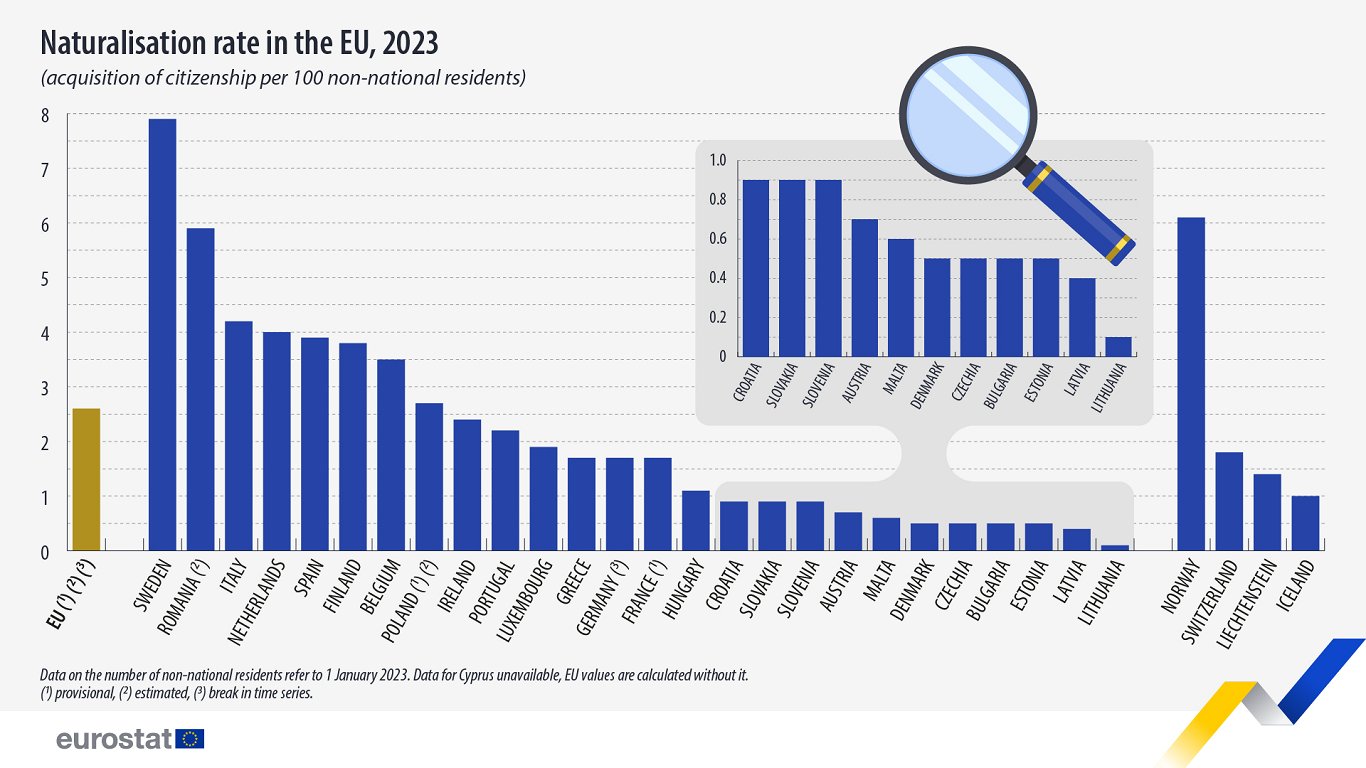The naturalisation rate is the ratio of the number of persons who acquired the citizenship of a country where they were living during a year over the total number of non-national residents in the same country at the beginning of the year.
In 2023, in the EU as a whole, 2.6 usual residents per hundred resident non-national citizens were granted citizenship
In 2023, Sweden recorded the highest naturalisation rate among EU countries, with 7.9 citizenships granted per 100 non-national residents, followed by Romania (5.9) and Italy (4.1).
At the other end of the scale, the lowest naturalisation rates per 100 non-national residents were recorded in the Baltic states: Lithuania (0.1), Latvia (0.4) and Estonia (0.5).

Naturalisation rates in EU, 2022-3
Photo: Eurostat
In 2023, 1 050 100 people obtained citizenship of the EU country of their usual residence, an increase of 6.1% compared with 2022. This was mainly the result of increases in absolute terms in Spain (58 600 more residents were granted Spanish citizenship than in 2022), followed by Germany (33 200 more) and Belgium (6 700 more).
By contrast, the largest decreases in absolute terms compared with 2022 were observed in Sweden (down by 24 400), followed by France (down by 17 200) and Portugal (down by 3 800).

Naturalization in EU, 2022-23
Photo: Eurostat
In relative terms, the largest increases occurred in Ireland (34.3%), Estonia (32.7%), Spain (32.2%) and Poland (23.3%), while the largest decreases occurred in Lithuania (-78.1%), Bulgaria (-55.4%) and Denmark (-34.8%).
The breakdown of the previous citizenships of naturalised citizens reveals some interesting data. The largest proportion comes from people previously classed as ‘non-citizens’. It is also worth noting that Latvia does allow its citizens to hold dual nationality with other EU and NATO member states plus selected other countries such as Australia which have significant diaspora populations. However, it is not allowed to have Russian or Belarusian citizenship alongside Latvian citizenship.

Latvia naturalisation statistics 2022-3
Photo: Eurostat
In total more than 150,000 persons have been granted Latvian citizenship through naturalisation since the system to do so was introduced in 1995. In 2023 a total of 595 persons naturalised and in 2024 that number rose to 694 persons.
In order to become a Latvian citizen by naturalisation, a person must confirm their basic proficiency in the Latvian language, as well as successfully pass an examination of the basic provisions of the constitution, the text of the national anthem and some knowledge of Latvian history.
Citizenship can also be bestowed by special ruling of the Saeima, which sidesteps the requirements for the language and other tests. However, this is a fairly rare occurrence.
You can find more information about naturalisation at the PMLP website here.
Select text and press Ctrl+Enter to send a suggested correction to the editor
Select text and press Report a mistake to send a suggested correction to the editor
Tell us about a mistake
